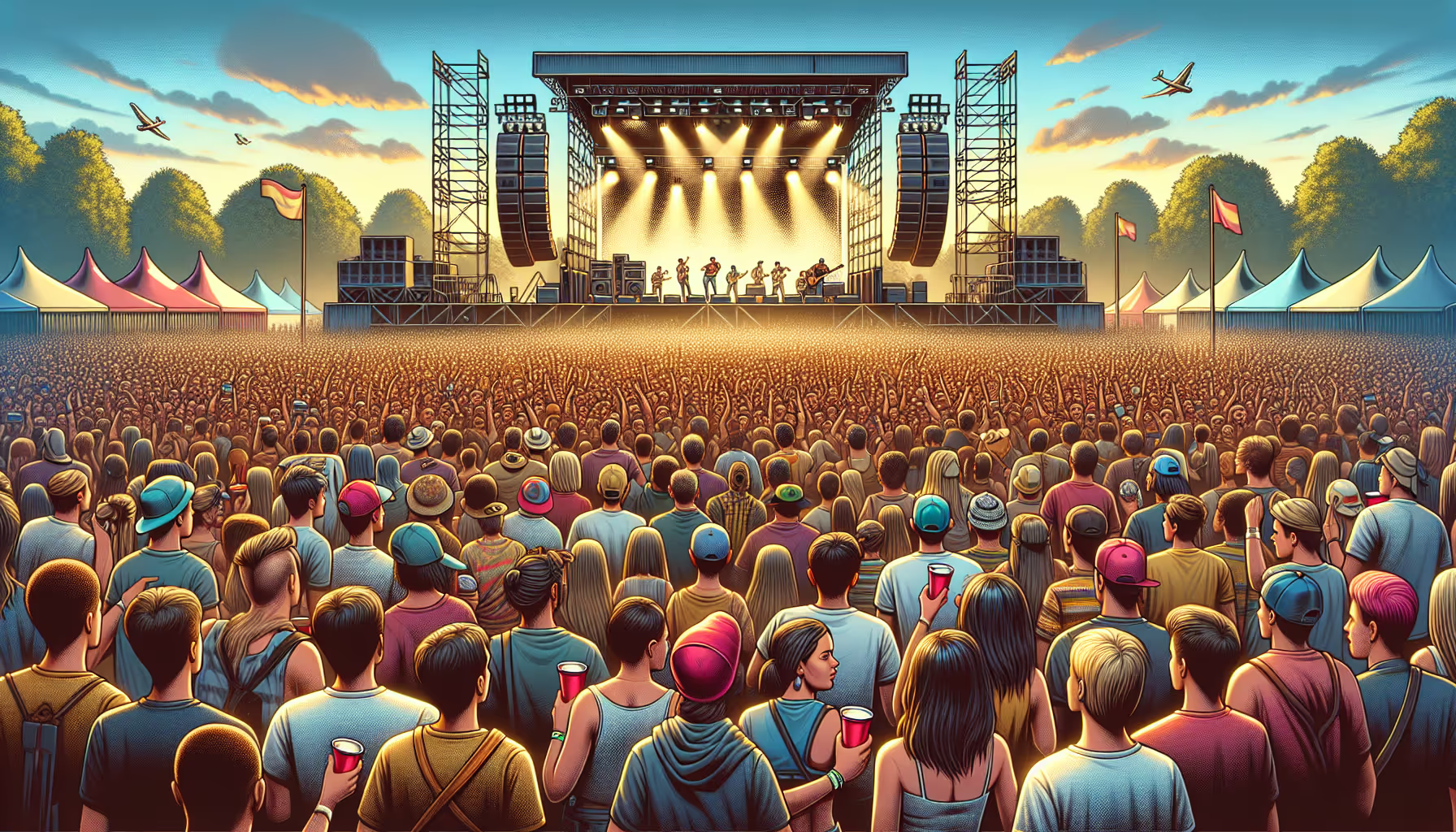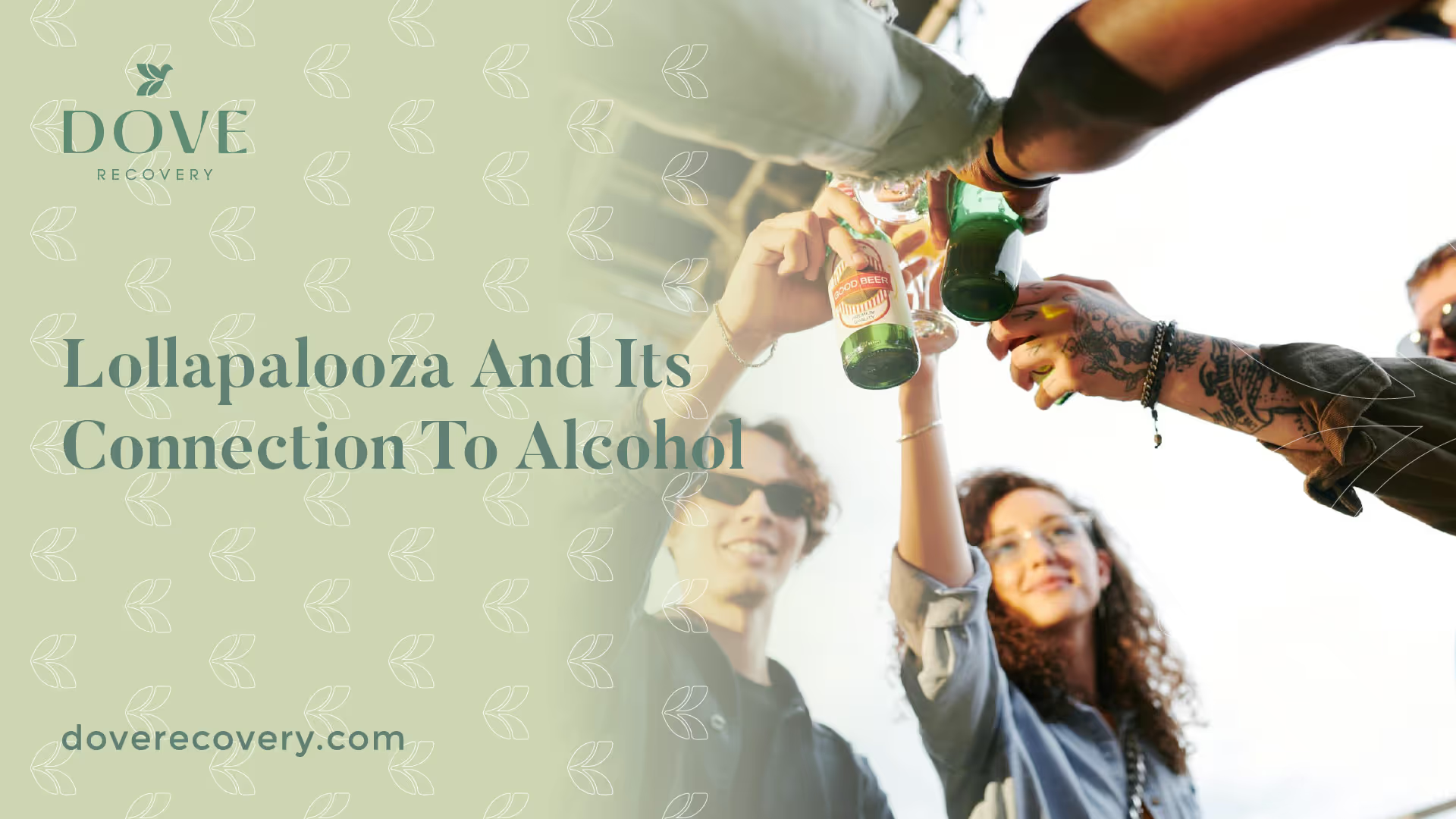Lollapalooza And Its Connection To Alcohol

Understanding Lollapalooza
Lollapalooza, an annual music festival known for its eclectic lineups and global reach, has an intriguing history and connection to alcohol. The festival's policies and experiences surrounding alcohol use offer a unique perspective on the larger societal implications of alcohol consumption.
The History of Lollapalooza
Lollapalooza began in 1991 as a multi-city venue for Jane's Addiction leader Perry Farrell's band's farewell tour. The festival featured a diverse lineup of hip-hop, techno, and alternative rock performers over a four-day period. Over the years, it has evolved into a major event in the music scene, attracting 100,000 attendees per day in Chicago.

The festival shifted from a touring model to a "destination festival" in 2005, based in Chicago's Grant Park. The change was prompted by the evolving landscape of the music industry and the dwindling appeal of touring festivals for financial reasons.
Global Expansion of Lollapalooza
Over the decades, Lollapalooza has expanded globally, hosting festivals in cities around the world. Locations have included Santiago, Chile; Sao Paulo, Brazil; Buenos Aires, Argentina; Berlin, Germany; Sweden; Paris, France; and Mumbai, India. The festival also attempted an edition in Tel Aviv, Israel, which was indefinitely postponed in 2013.
Lollapalooza's international events reflect the globalization of culture, with a diverse array of artists from around the world featured in its lineups. Notable international performers have included Colombian star Karol G, K-pop icons Tomorrow X Together, Indonesian singer-songwriter NIKI, and Argentinian indie band Usted Señalemelo.
In the context of the festival's connection to alcohol, these global expansions have also brought about different cultural perspectives and approaches to alcohol consumption and management at the events. Understanding these nuances can provide valuable insights into the global dimensions of alcohol use and its societal implications.
Alcohol Policies at Lollapalooza
The connection between Lollapalooza and alcohol is a critical aspect of the festival's policies. In this section, we will delve into the rules and regulations related to alcohol consumption at the event.
Prohibition of Alcohol at the Festival
Lollapalooza has established strict rules regarding alcohol to ensure the safety and enjoyment of all attendees. Alcohol, along with illegal drugs, weapons, and large bags, is strictly prohibited at the festival grounds, as per Lollapalooza Support.
The festival's strict prohibition of alcohol is part of its commitment to creating a safe and inclusive environment for all participants. The event organizers have recognized the potential risks and health hazards associated with alcohol consumption, particularly in a festival setting where monitoring individual consumption can be challenging.
Safety Measures and Partnerships
In an effort to rigorously enforce the prohibition of alcohol and prevent its consumption, Lollapalooza has put in place stringent security measures. These include thorough searches at the gates and a firm policy against bringing alcohol into the festival grounds [3].
Furthermore, city officials have promised to strictly enforce laws against underage drinking. This partnership with local authorities is an essential part of the festival's efforts to maintain a safe and enjoyable environment for all attendees.
In addition to these measures, Cook County Health officials have issued cautions against drug and alcohol misuse due to past increases in emergency room visits during the event [4]. They have emphasized that the amount of alcohol needed for a dangerous or life-threatening overdose can vary depending on factors such as age, drinking experience, and gender.
Symptoms of alcohol overdose include dehydration, which can be exacerbated by a lack of proper hydration with food and water. As such, Lollapalooza encourages attendees to stay hydrated and nourished throughout the event as part of its safety measures.
These measures and partnerships demonstrate a comprehensive approach to managing the risks associated with alcohol at Lollapalooza. By maintaining strict policies and collaborating with local authorities and health officials, the festival aims to minimize the potential harm caused by alcohol misuse and ensure a safe and enjoyable experience for all attendees.
Health Risks and Statistics
Diving deep into the health risks and statistics associated with Lollapalooza reveals the serious repercussions of underage drinking and substance abuse at the festival.
ER Visits and Underage Drinking
During Lollapalooza, a significant upsurge in emergency room visits due to intoxicated teenagers has been reported, with suburban, teenage girls being a common demographic. These individuals often present with blood alcohol levels well above the legal limit for adults [3].
Lurie Children's Hospital's emergency room treated 102 underage patients for alcohol during Lollapalooza, more than twice the number during the next highest three-day weekend total. And while the number of teenagers ending up in Chicago Emergency Rooms (ERs) due to intoxication during Lollapalooza has stabilized, the numbers remain concerning.
This table demonstrates a 31% decrease in ER visits from 2014, despite the festival's expansion from three to four days in 2016.
Medical Concerns and Symptoms
The hospital medical emergencies related to alcohol and drugs peak during Lollapalooza, especially from underage drinking. Doctors indicate that there could be more individuals with substance-related issues who do not require hospitalization [3].
The average number of visits for alcohol intoxication among underage teens and young adults each day of Lollapalooza was 71 in 2014, 50 in 2015, and 37 in both 2016 and 2017, marking a 48% decrease since 2014 in the daily average during Lollapalooza. Hospital visits were most common on the first day of Lollapalooza (Thursday) in both 2016 and 2017 [5].
The symptoms associated with alcohol intoxication and substance abuse can vary, but commonly include nausea, dizziness, impaired coordination, and unconsciousness. In severe cases, it can lead to alcohol poisoning, which is potentially fatal. It's important for festival-goers to be aware of these risks and to seek immediate medical attention if they or someone else are experiencing these symptoms.
Impact of Alcohol and Drugs
The influence of alcohol and drugs at Lollapalooza can have serious health implications for attendees. The potential risks range from highly dangerous compounds to the availability and readiness of emergency response facilities.
Dangerous Compounds and Effects
The compounds found in drugs consumed during Lollapalooza can act as stimulants, leading to increased heart rates and body temperatures, posing serious health risks especially in hot environments. Attendees are advised to avoid synthetic drugs that can lead to potentially life-threatening symptoms, with these compounds being stimulants causing the heart to race and body temperature to increase.
The effects of alcohol overdose can also be severe. Symptoms include dehydration, which can be exacerbated by a lack of proper hydration with food and water. The amount of alcohol needed for a dangerous or life-threatening overdose can vary depending on factors such as age, drinking experience, and gender [4].
Emergency Response and Facilities
In response to these potential health risks, Lollapalooza has implemented emergency facilities and protocols to aid any attendees in distress. Medical tents and cooling stations are available at the festival, and attendees are encouraged to check out these facilities and look out for each other in case of distress.
Emergency response teams are also on standby, trained to handle cases of alcohol and drug overdose. They can provide immediate medical attention and transportation to nearby hospitals if necessary. These resources are crucial for ensuring the safety and well-being of festival-goers.
The impact of alcohol and drugs at Lollapalooza highlights the need for responsible behavior and vigilance. Attendees should be aware of the potential risks and make use of the resources available to them to ensure a safe and enjoyable festival experience.
Trends and Stabilization
In this section, we will delve into the trends in ER visits related to Lollapalooza and its connection to alcohol, and explore the impact of efforts to curb underage drinking at the festival.
Trends in ER Visits
Since the expansion of Lollapalooza from a three-day festival to a four-day event in 2016, the number of teenagers ending up in Chicago Emergency Rooms (ERs) due to intoxication has stabilized. The number of ER visits for underage drinkers, ranging from ages 13 to 20, peaked in 2014 with 212 visits citywide. These visits decreased to 149 in 2015, 148 in 2016, and 147 in 2017, marking a 31% decrease from 2014.
Further, the daily average of visits for alcohol intoxication among underage attendees during Lollapalooza has decreased by 48% since 2014. The average was 71 in 2014, 50 in 2015, and 37 in both 2016 and 2017. Intriguingly, hospital visits were most common on the first day of Lollapalooza (Thursday) in both 2016 and 2017.
Efforts and Impact on Underage Drinking
Efforts to curb underage drinking at Lollapalooza have played a significant role in these declining numbers. According to Robert Tanz, MD, a general pediatrician at Lurie Children’s and Professor of Pediatrics at Northwestern University Feinberg School of Medicine, "We believe our efforts to create awareness of this issue coupled with the City’s stricter policies and procedures around drinking at Lollapalooza have had a significant impact on underage drinking" [5].
Despite this progress, underage drinking remains a significant concern at city festivals and other large-scale events. As Nina Alfieri, MD, lead researcher on the study and General Academic Pediatrics Fellow at Lurie Children’s, states, underage drinking "can lead to serious health and safety risks in children" [5].
In light of this, parents are advised to discuss the risks of underage drinking with their children, particularly before concerts and events where alcohol will be present. They are also encouraged to ensure their children have safe plans for traveling home. The combined efforts of the festival organizers, city officials, and parents are essential in addressing the issue of underage drinking at Lollapalooza and similar events.
Parental Guidance and Recommendations
In light of the link between Lollapalooza and alcohol, it is crucial to offer guidance and recommendations to parents. This section highlights the importance of awareness and communication, as well as measures to ensure safety for young attendees.
Awareness and Communication
As per reports from the Lurie Children's Hospital, underage drinking is a significant issue at city festivals and other holidays, which can lead to serious health and safety risks in children. Therefore, parents are strongly advised to talk about the risks of underage drinking with their kids, especially before concerts and events where alcohol will be present.
This emphasizes the importance of open and honest communication with children about the potential dangers of alcohol consumption. By having these discussions, parents can play a critical role in creating awareness about the risks associated with underage drinking and its impact on health and safety.
Additionally, parents should ensure that their children have safe plans for traveling home after the event. This includes arranging for a designated driver, using public transportation, or booking a taxi or rideshare service.
Ensuring Safety for Young Attendees
The Lurie Children's Hospital report indicates a stabilization in the number of teenagers ending up in Chicago Emergency Rooms (ERs) due to intoxication during the Lollapalooza music festival, even though the event increased from 3 days to 4 days in 2016. The average number of visits for alcohol intoxication among underage teens and young adults each day of Lollapalooza was 71 in 2014, 50 in 2015, and 37 in both 2016 and 2017, marking a 48% decrease since 2014.
This trend suggests that efforts to create awareness about the issue, coupled with the City’s stricter policies and procedures around drinking at Lollapalooza, have had a significant impact on underage drinking.
Parents and guardians can contribute to this positive trend by staying informed about the festival's policies and regulations, and by educating their children about responsible behavior. Setting clear expectations and discussing potential scenarios and responses can help to ensure the safety and well-being of young attendees.
References
[1]: https://www.britannica.com/art/Lollapalooza
[3]: https://abc7chicago.com/lollapalooza-drugs-alcohol-er/894099/
[4]: https://cookcountyhealth.org/press_releases/cook-county-health-urges-lollapalooza-attendees-to-stay-safe/
[5]: https://www.luriechildrens.org/en/news-stories/binge-drinking-at-lollapalooza-has-stabilized-but-still-considered-major-concern/
